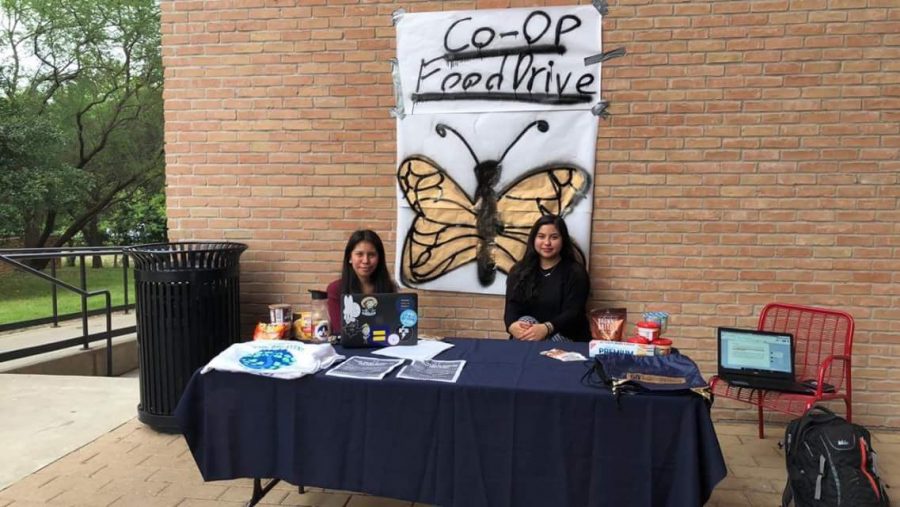OURVIEW: 5 Things to ask yourself before you apply for meal plan from Hilltopper Emergency Aid Program
Over $8,000 has been claimed from the program, helping about 160 Hilltoppers with their food insecurity.
Each week the editorial board reflects on a current issue in Our View. The position taken does not reflect the opinions of everyone on the Hilltop Views staff. This week’s editorial board is composed of writers Lilli Hime and Jose Garibay.
Last Tuesday, students received an email from Lisa Kirkpatrick, Vice President for Student Affairs, notifying them of a new initiative across campus to address food insecurity. Started by the Monarchs On the Hilltop and Open The Red Doors Collective, the Hilltopper Emergency Aid Program allows students who are facing food insecurity to receive meal plan. It is funded by the generosity of fellow students who wish to donate their excess meal plan or topper tender.
Given the great potential of this program and all the hard work put in by organizers, one of whom is writing this viewpoint, we’re afraid of the equally great potential for misuse. We want to assure the funds are reaching those who truly need it.
So, if you have or are considering applying for this program, we urge you to consider the following questions honestly.
-
What is food insecurity?
Food insecurity, as defined by the United States Department of Agriculture, is a “limited or uncertain access to adequate food.” In other words, your ability to access decent food is barred by your financials. This can take many forms.
Sometimes it’s choosing one necessity over the other, such as paying rent that month versus groceries. Maybe it’s eating fast food four nights in a row because the nearest grocery store is out of reach. In severe cases, it might be skipping meals for an entire day because you know you can’t afford it.
-
Is this a problem at St. Edward’s University?
In the 2016 survey done by Kelly Green, assistant professor of psychology, over 50% of the students surveyed experienced some kind of food insecurity. With a sample of over 300 people, that’s at least 150 students that you sit next to in class, pass by on campus and study alongside with.
While this is not a representative survey, it does speak to the larger problem of food insecurity on campuses across the nation. According to a New York Times article, an estimated half of all college students struggle or have struggled with food insecurity.
St. Edward’s is in no way alone in this problem, but, to the same end, we’re not alone in seeking a solution. From grocery store gift cards to food pantries, there have been a number of different ways schools have been tackling this issue, and the Hilltopper Emergency Aid Program is just the beginning for us.
-
How does this program address food insecurity?
The Hilltopper Emergency Aid Program is an opportunity for students to help their peers, specifically with the issue of food insecurity. Rather than let excess meal plan or topper tender go to waste at the end of the semester, students can donate their surplus to the fund. On the receiving end, those who face food insecurity can request $50 per week for three weeks to be added to their meal plan.
-
Am I facing food insecurity?
Food insecurity is often defined by four main factors: availability, accessibility, utilization and stability.
Availability might be when less nutritious food are easier for you in price and proximity, making them an automatic default. For example, if there’s only cheap, fast food chains in your near vicinity, they automatically default as first choice. More nutritious, and more expensive, alternatives take a back seat because not only are they not close, but they’re not financially realistic to your budget.
For accessibility, consider whether you have options for transportation to those sources such as a car and gas money, a bus station near you and the time it takes to commute.
Utilization can look like rationing an already-insubstantial amount of food for the week to the point where you could seriously be malnourished. This could result in actions like skipping meals or limiting yourself to one meal a day.
Lastly, stability can be interpreted as both a surplus and a lack of it. You may consistently be having issues with having enough food to live off of. You may also experience instability in knowing where your next meal will come from.
-
Is this program for me?
Above all, we urge you to be honest with yourself. The intentions of this program is to help the over 50% of food insecure students reported in the survey and all the ones who have gone unnoticed.
If you’re struggling, don’t be afraid to ask for help. If worrying about meals has become a significant stressor in your life, don’t be ashamed to use this service.
However, if running out of meal plan is only an annoying inconvenience and not a serious setback in your ability to eat, make sure you’re not taking away from others.
To donate, visit bit.ly/SEUEmergencyAid or email [email protected] with your student id and the amount you wish to donate.
To request, email [email protected] with your student id and request up to $50 a week.

I am Lilli Hime—English Writing and Rhetoric major and freelance writer at Hilltop Views. This is my senior year at St. Edward's University.
My role...







